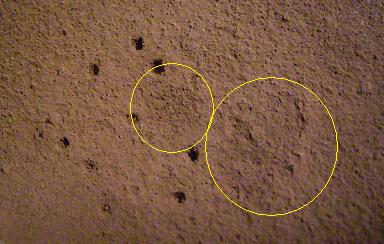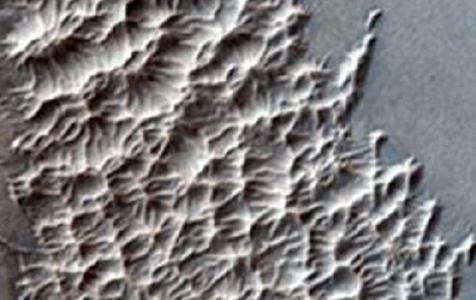Here are some questions that keep running through my mind.
Some of these emerge from experiments rhed about in James Roe's pamphlet called:
What electricity Is. Reproduced in part at this link:
http://para-az.com/wei_by_james_roe.html
Also the requirements for an arc in an vacuum are described here:
http://en.wikipedia.org/wiki/Vacuum_arc
Since gravity is a force of attraction and electrostatic attraction is also an attractive force
will the two forces combine to move materials that have a high electrical charge but no path
for leakage as might be expected on mars where the thin atmosphere increases the dielectric
condition while also doing little to stop solar-charge bombardment?
Since a vacuum is used to further control electrical breakdown and resulting arc-over,
why should we expect that an interplanetary arc would be the first force
to disturb the surface of a planet?
Wouldn't a more likely scenario be that electrostatic and gravitational stress, during a close
encounter with a body of comparable size, would raise substantial amounts of material from
the surface, as is seen in martian dust storms, and then exploit the modified atmospheric
properties to discharge in arc mode? A similar process occurs with volcano lightning or
for that mater earth lightning through clouds and other paths. I am reminded of winter
thunderstorms and the intense lightning occurring in the dry air. Is electrical potential
somehow allowed to rise to higher level before breakdown, thus making that lightning
so much more pronounded when it does occur?
Now i bring up again behavior seen in the electro-mass-lifting experiment where electrical
stress could not be relieved by an arc so the material was torn away and then the surface
underneath became marked by craters, which we previously saw were made without visible arcs.
More importantly, the lifting stopped as soon as an arc formed and maintained its connection?
This tells me that; if there is no easy path for electrical stress to unload its potential
then something else has to give way before the arc can travel. So material movement
should precede the arc, not the other way around as is suggested by comparing hard-surface
metallic EDM to whatever process gives planetary scales sculpting where loose non-conductive
material is present and where atmospheric conditions resist arc discharge.
We might think to ask if the surface of Mars had subterranean pathways that favored electrical
discharge but that may not matter in consideration of low lifting potential while an arc is
established, as well as the tendency for an arc to form were conductivity is high...
Something seems off in comparing EDM of metals with planetary sculpting without first
considering electro-static mass-lifting of material... d...z
ttlbtg











